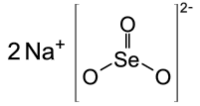Calf Manna = crack for livestock
I am comparing my label to the Calf-Manna label and I am trying to see the difference. The CM seems to have the same contents, just less of it, except for salt, it has much more salt in the CM.
Follow along with the video below to see how to install our site as a web app on your home screen.
Note: This feature may not be available in some browsers.
Calf Manna = crack for livestock
I am comparing my label to the Calf-Manna label and I am trying to see the difference. The CM seems to have the same contents, just less of it, except for salt, it has much more salt in the CM.
Where do you buy this and if you don't mind can I ask the price? I know our TSC doesn't carry this one, and I'm not really sure who else might.
Are you trying to compare your Country Acre gamebird feed to the Calf Manna (livestock feed) or the Manna Pro Gamebird crumble?


I thought the Country Acres Gamebird I posted to the Calf Manna Gamebird crumble that Zaz posted the label of.?.

It looks like "Country Acres" is a series of regionally manufactured foods affiliated with Purina.
I have heard before that much animal feed is manufactured regionally, and there can be differences depending on which region and mill may be manufacturing the feed. Dunno if this is still or ever was true.
Last ingredient listed on the bagHere's what PeaLover130's cat (and therefore also the pea pen) is currently getting:


Hard to read in the photo, but it is 30% protein, lower than some other kinds... I think an "outdoor" catfood would have higher protein. I note that the salt content is NOT listed anywhere on the label, and neither is the "ash" content. I looked online at the Purina website, and could not find the salt content there either... that makes me suspicious that it might be higher than I would like, dunno how they get away with not listing it. Must be voluntary and they un-volunteered.






